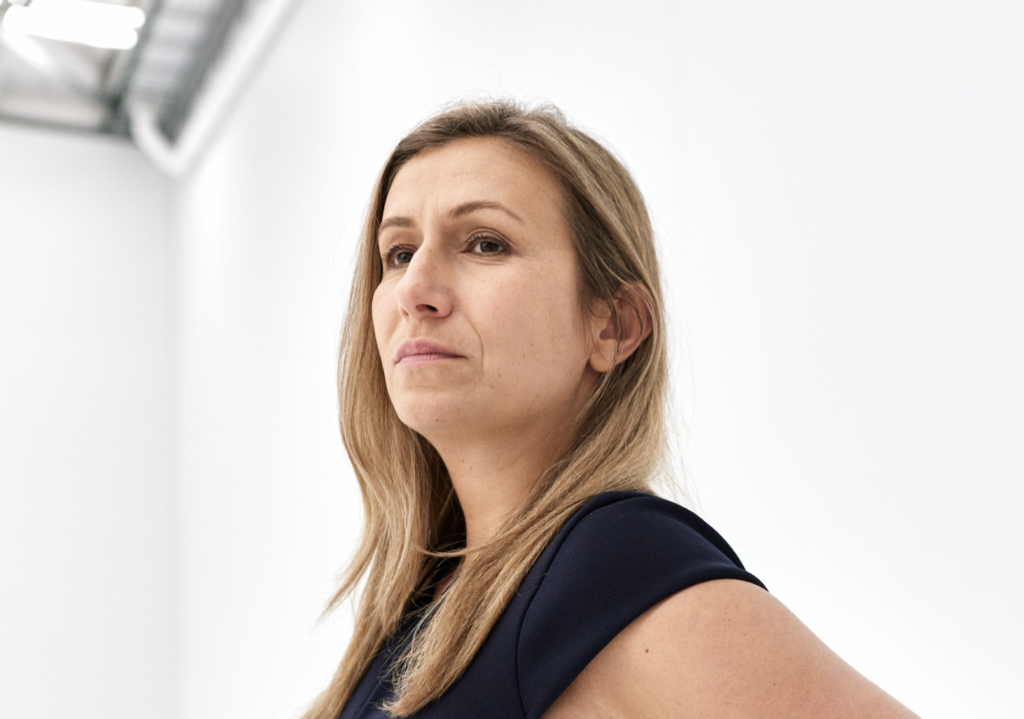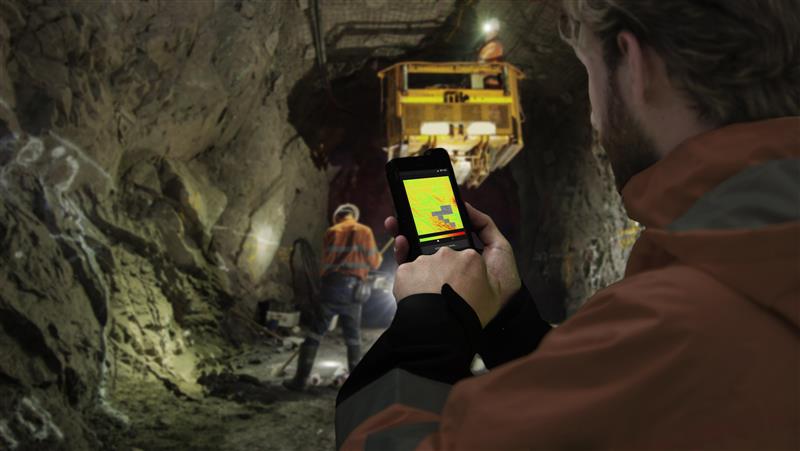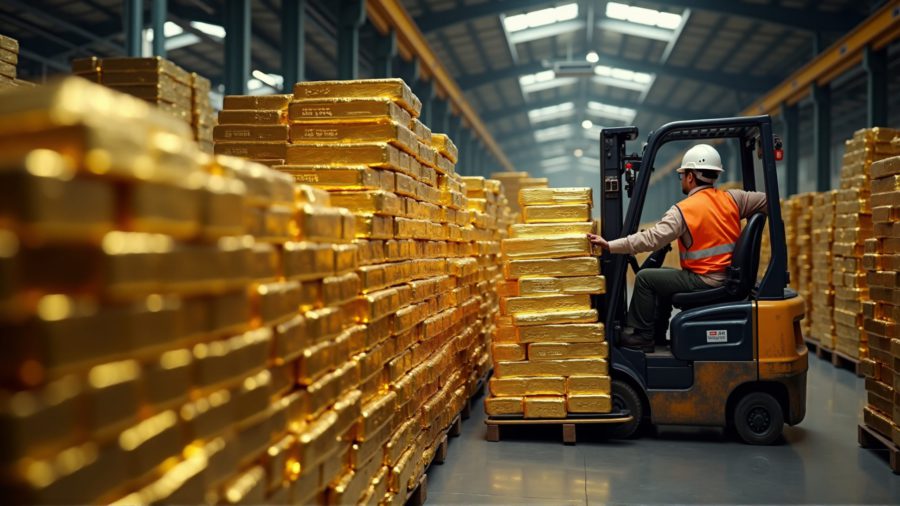Women in Mining spotlight: Flavia Tata Nardini

On the theme of highlighting women’s talent and contributions to the industry and identifying role models for future generations, MINING.COM sat down with Flavia Tata Nardini, CEO and co-founder of Fleet Space Technologies, which was named Australia’s fastest growing company in 2023 by the Financial Review.
Fleet Space develops and operates microsatellites that enable their end-to-end mineral exploration solution, ExoSphere. Tata Nardini was appointed last year to the board of directors at Austmine, an association for Australia’s mining equipment, technology, and services sector, representing over 700 companies advancing mining innovation around the world.
This year, Fleet Space launched its 8th satellite in space — deploying its next-generation Centauri-6 satellite on SpaceX’s Bandwagon-1 mission, launched aboard a SpaceX Falcon 9.
Tata Nardini shared some career highlights and industry insights in this exclusive interview.
MDC: What led you to a career in mining?
Tata Nardini: My journey doesn’t start in the mining industry. I’m Italian, born in Rome, all my life I wanted to become a space engineer. I love planets. I love space. [I wanted] to somehow be an explorer, but from a different angle. It’s something that I was born with. I come from a big family — no one else did it.
I went to work at European Space Agency, kind of the NASA in Europe, working on Mars missions and moon missions. I was working on TNO, the Dutch defence advanced concept entity. It is all about future space advanced concepts. I was actually working on two topics, one in engines for big rockets and another one I started getting passionate about —small satellites.
This is a big thing, billions of dollars. 20 years ago, satellites were starting to get smaller, think about the big computers and how we [then] got an iPhone that is more powerful than an IBM computer. In Silicon Valley and in the US, people were starting to build satellites as big as a shoebox, but as powerful as a big satellite. I got fascinated about building engines and propulsion systems for small satellites and I was in my 20s and I was leading teams to try to design how to launch these satellites to other planets.
Then I met the father of my kids, and I moved to Australia because he was from Adelaide and there’s where my Fleet Space journey started. Australia didn’t have a space agency at that time, so the Australia Space Agency formed six years ago, and I was part of the formation. Fleet Space, at this point, is Australia’s biggest space start-up.
We fell in love with critical minerals and here we are. From rockets and ending at rocks, really it was a journey of entrepreneurship. I built the company eight years ago and the idea was using small satellites. When you have very big satellites, you are limited to what you can do with them. When you change the economic paradigm in space and you go to much smaller satellites, you kind of unlock business models on Earth and we’re fascinated about it.
Exploration is a long journey. From the moment they prospect an area to the moment that they find something is an average 15 years and now we’re talking about funding copper and lithium and all these huge numbers to reach to net zero. It’s just not going to happen. It’s a macro problem. And I got fascinated about that, so the idea was launching a constellation of small satellites completely dedicated to exploration in mining. We brought the knowledge from the space industry into the mining industry.
MDC: Can you tell us about the technology?
Tata Nardini: The service we provide, called Exosphere, and what we have built is an end to end solution that goes from geophysical sensors on the ground that transmit data through our satellites and the satellite runs data to the cloud. And we have machine learning and AI, plus the client facing inside data. So, we are the only space company in the world that actually vertically integrates in a data solution.
Everything in mining is about drilling — it’s a difficult problem to solve. There’s a lot of drilling and there is a lot of geophysics, but it is most of the time too deep, so doesn’t really tell you about vertical structures and depth. People deploy things in the field, then it takes years before you can arrive at conclusion. The idea of Exosphere was to allow more scalability and speed. When you come from another industry into the mining industry like [an] entrepreneur from the software industry you actually look at the problem.
I didn’t know the intrinsic issues of mining. What I came is from a knowledge of launching satellites. When there’s that kind of naivety — it’s a superpower.
We say ‘why can’t this be different? Why can’t we send real time data to the cloud? Why can’t we use ML and AI to analyse this data? Can we not know the subsurface structure of something in 48 hours instead of two years?’
That allows all this data to go directly to the cloud. It allows us to register seismic activity of Earth. It’s called Ambient Noise Tomography — it’s kind of a beautiful thing in a sense because you don’t have any impact, you’re just listening to the sounds of Earth with heavy ML and AI and actually map those waves as a proxy for density.
In 48 hours today we get inside what explorers were used to having [take] years. That’s our vision, to accelerate exploration 30 times and try to get Earth on track towards net zero.
MDC: How have you seen attitudes change in the industry over the last few years?
Tata Nardini: The industry is going through a major push to go through net zero to change the way they operate based on environmental impact. The world is under scrutiny in the past three years, and they (miners) are going to be the hero of net zero. I’ve seen massive push for innovation. Nowadays there is a race towards time. It’s a race that we need to find so much minerals in the coming 10 years. We need to find five times more copper than all we found in the history of this planet. There are a lot of cultural things that needs to change, it’s happening as we speak.
MDC: What do you think are some of the biggest challenges and opportunities for women in this industry?
Tata Nardini: I see way more women coming from side industries [to] the mining industry to try to disrupt it. There is a lot of work to do, and I see the same in the space industry.
I’m a big believer that when you actually try to innovate in an industry, no matter what industry it is, you need diversity — and not just gender diversity. Diversity on all the spectrum of the scale because innovation is hard. Innovation means different skill sets, different mindsets, different desires. So as a founder, CEO of a company I strive every day to get that gender balance, but not because we need to tick boxes, because I strongly believe that changing the status quo in industry requires a lot of different thinking.
There are opportunities for women from other industries to come bringing a different skill set. I feel positive innovation will not happen without women.
MDC: What do you think are some of the biggest misconceptions about the mining industry?
Tata Nardini: I think the biggest misconception is that the industry doesn’t use tech and doesn’t innovate. I came into this industry thinking that it would have been really hard to sell a new product because everyone was telling me [the] whole industry operates always at the same pace.
I think it’s a misconception. I think when you actually provide value, they go fast. This is an industry I saw [having] really complex problems. They need innovation and they need tech. The problem is to be the right tech. You can’t just [put] drills in the ground anymore. It’s not sustainable. It’s not environmentally correct. And the efficiencies are not there. The shake ups are interesting to watch.
More News
Study confirms drop-in electrode technology enables 10 minute EV charging at -10°C
April 14, 2025 | 04:06 pm
Newmont deploys Ericsson private 5G at Australia’s largest underground mine
April 14, 2025 | 01:20 pm
{{ commodity.name }}
{{ post.title }}
{{ post.date }}




Comments